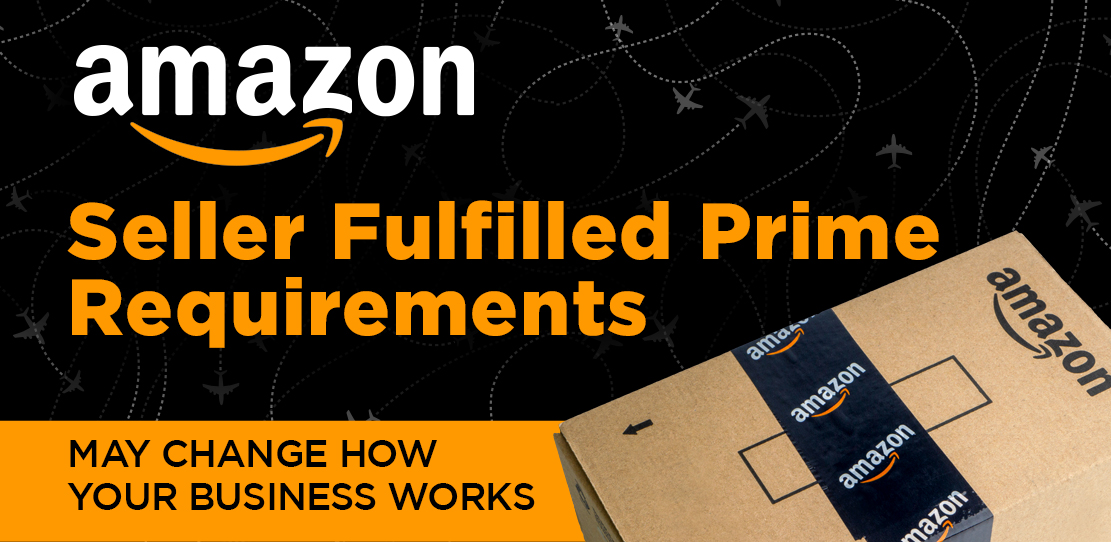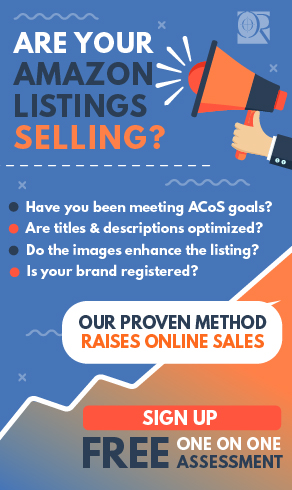
Amazon Seller Fulfilled Prime (SFP) is a type of order delivery that allows businesses to ship Prime orders directly to sellers. SFP comes with many benefits for both buyers and sellers since it allows more customers to access fast shipping. However, Amazon has decided to change SFP as part of their initiative to provide faster shipping times. Staying up to date on the new SFP requirements will ensure a business can continue to satisfy their customers.
The Four Major Changes to Amazon Seller Fulfilled Prime
During COVID-19, Amazon decided to implement shipping changes to meet increased customer demand. A few months ago, Amazon announced a plan to expand their one and two-day shipping services. To ensure that customers get the same shipping times whether the order is shipped by Amazon or a seller who has qualified for Seller Fulfilled Prime, Amazon has asked that those in the SFP program meet their new delivery requirements. Amazon’s guide for Seller Fulfilled Prime is a bit lengthy, but all their changes can essentially be summed up as four new rules.
Sellers Must Provide Nationwide Delivery Coverage
The first new change is that SFP sellers cannot choose which areas within the United States they cover. Previously, sellers could opt out of serving various areas while still maintaining their SFP status. Now, anyone who is a part of SFP must provide nationwide delivery coverage throughout the 48 contiguous United States. Amazon’s guidelines for nationwide coverage are not quite as strict as it seems. Sellers only need to make sure 70 percent of their items have nationwide availability, so it is possible to exclude some things as needed.
This coverage rule only applies to standard-size products. Amazon recognizes that oversized objects have more shipping challenges, so SFP sellers can still exclude parts of the nation from their shipping coverage. Items may count as oversize if they weigh more than 20 pounds or are longer than 18 inches. Check your “Manage Seller Fulfilled Prime” page to see if the items you are shipping will count as standard or oversize.
The Cut Off For Shipping Has Been Slightly Extended
Another significant change has been extensions to order cut-off times. Previously, a buyer had until 2:00 p.m. in your local time zone to make an order for one or two-day shipping. Any orders you got after this time could have an extra day before they needed to be delivered. Now, Amazon has extended the cut-off to 4:00 p.m. in your local time instead.
This means that sellers may get more orders to fulfill in a single day which can be a good thing or a bad thing depending on your current capabilities. The longer cut-off time also means your previous shipping times might not work. You may need to get your carrier to pick up your orders at a later time of day to meet all your quotas. You also have the option of placing your cut-off time even later if you do feel your company can handle the changes.
Sellers Must Now Ship on At Least One Weekend Day
For many SFP sellers, this is the big change that may have them rethinking their enrollment in SFP. All SFP sellers must now use a shipping method that allows for delivery and pick up on at least one day of the weekend. If you were one of the many people who just shipped Monday through Friday, this can be a very tricky adjustment.
It requires you to both change your shipping method and spend more time handling packaging and fulfillment. You will need to go to “Order fulfillment settings” and select either Saturday or Sunday as a day you operate. Then you will need to switch to working a six-day week which can come with a host of problems like paying more workers or needing to pay overtime.
There Are New Targets You Have to Meet to Stay Enrolled in SFP
The final change is updated Delivery Speed metrics. Delivery Speed metrics measure how often you are living up to your promise to deliver items on time. They are calculated by measuring the percentage of times customers view products with one or two-day shipping speed. Delivery Speed metrics are not about how many orders you actually ship. Instead, it is simply about how many orders you are capable of shipping.
Amazon is eventually moving to metrics where the percentage of one-day product detail page views is 30 percent and the percentage of two-day product detail page views is 70 percent. Essentially, the targets mean that you can only be in SFP as long as you are providing one or two-day shipping for the majority of your products. To increase your metrics to acceptable numbers, you may need to switch carriers or add more shipping destinations to your network.
When Will the New Amazon SFP Guidelines Go Into Effect?
If these Amazon SFP 2021 changes have you worried, the good news is that you have a little time to adjust to them. These requirements are not an overnight change you have to immediately start following. Instead, Amazon has given sellers enrolled in SFP a few months to make the switch.
The rules on weekend pickups and nationwide coverage have been in effect since February 1, but sellers are not expected to meet these requirements right away. The changes to Delivery Speed Targets have slightly increased starting on February 1, and they will increase again starting on May 31. The final Delivery Speed Targets will not be in effect until June 1. The change to shipping cut-off times will not start until June 30.
What Happens If You Cannot Meet These Guidelines?
Amazon has stated that they intend to be fairly firm on these guidelines. They do not offer exceptions for small businesses or businesses that are closed on weekends. You do not automatically get removed from the SFP program if you miss these guidelines every now and then. However, Amazon does reserve the rights to review the eligibility of anyone failing to meet the requirements.
If Amazon notices you are not fulfilling their guidelines, they will assess your membership in the program. The company may discuss the case with you and recommend ways you can change your business to stay in the program. If you still cannot meet their guidelines, your eligibility to participate in the program will be suspended. This does not come with any fines or other major consequences. It will just make it harder to reach a certain subset of customers. Afterward, you may still use other Amazon programs, and you may be able to re-enroll in Amazon SFP later on.
Alternatives to Using Amazon SFP in 2021
An unfortunate reality is that some businesses simply cannot satisfy the new SFP guidelines. It puts a lot of burden on businesses to boost their shipping capacity. Depending on your customer base, it might not be financially feasible to operate on weekends or do late night deliveries. Some companies could actually lose money by having to expand their shipping speed and range. However, you do not have to let the Amazon SFP changes harm your business. There are some other great alternatives that Amazon Sellers can use.
3rd Party Logistics (3PL)
If you do not want the stress and hassle of using Amazon SFP anymore, you can outsource order fulfillment. One option is third-party logistics (3PL). This lets you just give your product to a third-party company, and then they will handle things like inventory, storage, shipping, and returns. A 3PL provides personalized attention and helps you select a fulfillment method that works for your needs. They can often customize their services to address your company’s unique situation. Often, 3PLs have negotiated lower rates with major shipping companies, so their fees and rates can be cheaper than handling shipping yourself.
Fulfillment By Amazon (FBA)
Another option is using fulfillment by Amazon (FBA). This lets you prepare products, give them to Amazon, and then have Amazon handle shipping and returns. The perk is that you no longer have to worry about meeting Amazon’s requirements. It does result in higher fees than 3PL or SFP shipping though, and there are also some concerns about quality. When you send your packages to Amazon, they are grouped with all supposedly identical items. Then, when a buyer orders your product, Amazon just ships them a compatible item from any nearby warehouse. This can lead to some counterfeiting and other quality control problems because you do not know exactly what product a customer is getting.
Ultimately, SFP, 3PL, and FBA can all be helpful choices. Finding the right option will really just depend on your unique needs. At OperationROI, we are happy to help you assess your shipping needs and figure out what the new SFP requirements will mean for you. Get in touch with us now to learn more.
Learn More About Our Management for Amazon Sellers Schedule A Call Today






